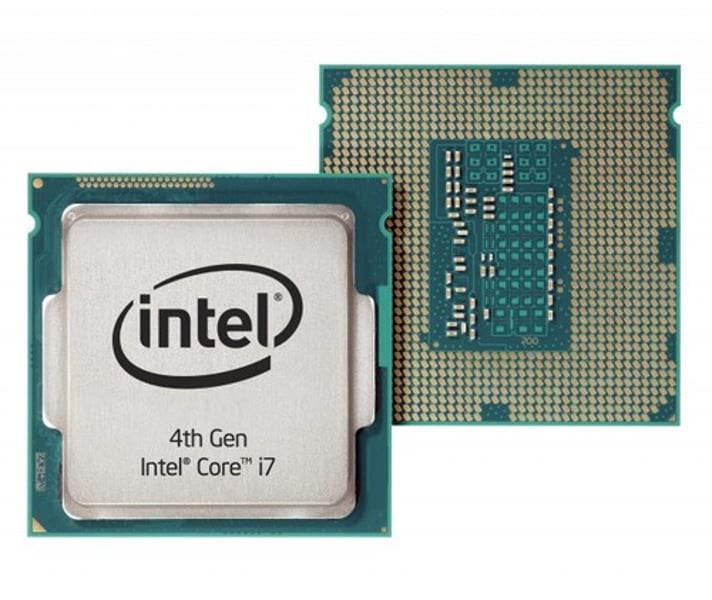GCSE Computer Science - 1.1 Systems Architecture
1/43
There's no tags or description
Looks like no tags are added yet.
Name | Mastery | Learn | Test | Matching | Spaced |
|---|
No study sessions yet.
44 Terms
What does CPU stand for?
The Central Processing Unit.
What is the CPU?
The brain of the computer system.

What does the CPU do?
Process the data and instructions that make the computer system work.
What does the processing power of a CPU depend on?
It's:
-Clock speed
-Number of cores
-Cache size
What does the CPU architecture describe?
The main components of the CPU, their interaction with one another, and their interaction with other parts of the computer system.
How many main parts does a CPU have?
3
What are the names of the 3 main parts of a CPU?
-The control unit (CU)
-The arithmetic logic unit (ALU)
-The cache
Which main part of the CPU has the overall control of the CPU?
The control unit (CU)
What is the main job of the control unit (CU)?
To execute program instructions by following the fetch-decode-execute cycle.
"The Control Unit (CU) controls the flow of data __________ and __________ of the CPU."
"inside"
"outside"
The Control Unit controls the flow of data inside the CPU to where?
To the registers, the ALU and the cache.
The Control Unit controls the flow of data outside the CPU to where?
To the main memory and input/output devices.
What does ALU stand for?
The Arithmetic Logic Unit
What does the ALU do?
All the calculations and comparisons - sImple addition and subtraction, compares the size of numbers and can do multiplications and divisions using repeated addition and subtraction.
What register does the ALU contain?
The accumulator.
What type of operations does the ALU perform?
Logic operations such as AND, OR and NOT and binary shifts.
What is the cache?
The cache is very fast memory in the CPU.
"Cache is _____________ than registers, but _____________ than RAM"
"slower"
"Faster"
"The cache stores ____________________ used data"
"frequently"
Why does the cache store regularly used data?
So that the CPU can access it quickly the next time that it is needed.
When the CPU requests data, where does it first check?
The cache.
When the CPU requests data, and the data is not in the cache, where does it check next?
The RAM.
"Compared to RAM and secondary storage, caches have a very low _____________ and are ________________."
"capacity"
"expensive"
The registers that the CPU contains do what?
Temporarily hold tiny bits of data needed by the CPU.
An advantage of registers is that they are...
Super quick to read/write, way quicker than any other form of memory.
What does the Von Neumann architecture describe?
A system where the CPU runs programs stored in memory. Programs consist of instructions and data which are stored in memory addresses.
What is the function of the program counter (PC)?
To hold the memory address of the instruction for each cycle.
What is the function of the accumulator?
To store the immediate results of calculations in the ALU.
What is the function of memory?
To hold the program instructions and the program data.
Other than the accumulator, what other two registers are present in the CPU?
The Memory Address Register (MAR) and the Memory Data Register (MDR).
What is the function of the MAR?
To hold any memory address about to be used by the CPU. The address may point to data, or a CPU instruction.
What is the function of the MDR?
To hold actual data or instructions, which may have been fetched from the memory, or be waiting to be written to memory.
Which cycle do CPUs follow?
The fetch-decode-execute cycle.
What does the fetch instruction do?
1. Copies the memory address from the program counter to the MAR.
2. Copies the instruction which is stored in the MAR address to the MDR.
3. Increments the program counter to point to the address of the next instruction.
What does the decode instruction do?
The instruction in the MDR is passed to the Instruction Register where it is decoded by the CU and the CU might prep for the next step by loading values into the MDR/MAR etc.
What does the execute instruction do?
The instruction is carried out. If data needs to be saved, it is stored in the accumulator.
What does the instruction register do?
Used in the decode part of the fetch-decode-execute cycle. The control unit looks up in the instruction set what the instruction means so that the CPU can then execute it.
What is an embedded system?
A smaller device used to perform a specific task within a larger device, eg washing machine.
Why is an embedded system also called a real-time system?
Embedded systems must ensure an immediate response in order for the system to react to different situations, eg airbags in a car must deploy as soon as a collision is detected.
How is clock speed measured?
The clock is a vibrating quartz crystal. The faster it vibrates, the faster instructions are processed. Rates of 3-4GHz are common for standard computers.
What impact does doubling the number of cores have?
Doubling the number of cores can increase processing speeds, as each processor can work on different tasks at the same time.
What is parallel processing?
Parallel processing occurs when multiple cores work on the same program at the same time.
What is multitasking?
Multitasking is when multiple cores can work on different programs at the same time.
Describe what is meant by a 3.2GHz CPU.
A 3.2GHz CPU has a clock speed of 3.2GHz. This gives the number of instructions which can be processed each second. A 3.2GHz processor can complete 3.2 billion processing cycles per second.